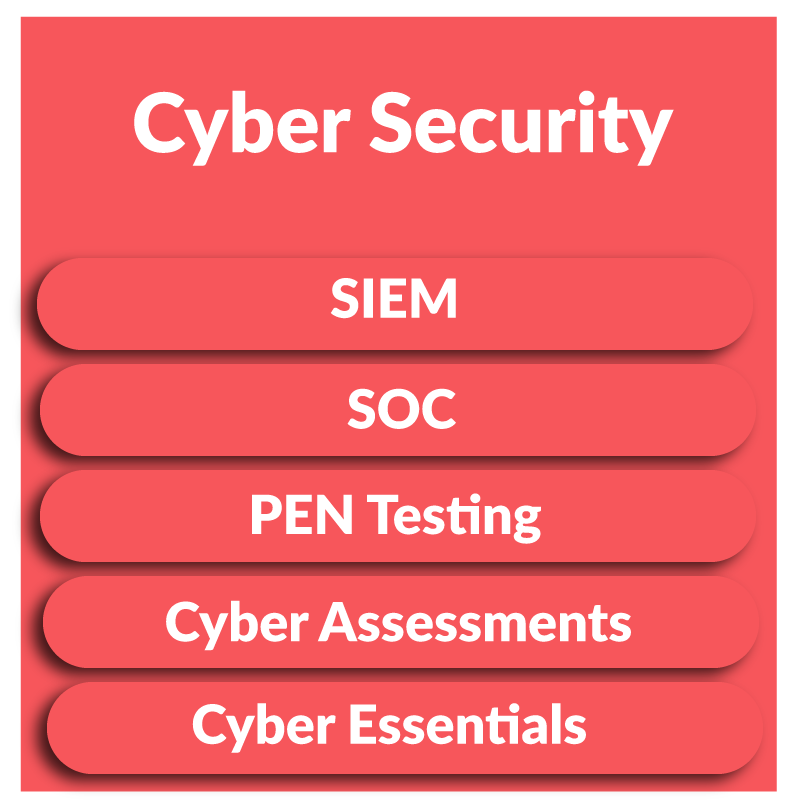Cloud
Flexible solutions to keep your business agile
Discover our Cloud solutions
Our technical experts work with customers to understand business needs today and their plans for the future, ensuring all recommendations whether they be private cloud, public cloud such as AWS or Azure or hybrid cloud, always fit business demands and direction.
Backup as a Service (BaaS)
Providing a range of BaaS services means we can bespoke services in line with the importance of data
Disaster Recovery as a Service (DRaaS)
Experts ready and able to deliver a speedy and thorough response when disaster strikes
Infrastructure as a Service (IaaS)
Availability and Security on demand – delivered from our multiple data centres across the UK
Private Cloud
Koris365 Cloud is our own private cloud built and managed and monitored 24/7/365 by our team of experts
Public Cloud
Eliminate the hassle of dealing with the regular refresh cycles and removes the need to manage physical servers and storage
Fully operational cloud solution with P1 support whenever you need it
We were one of the first companies in the United Kingdom to offer our own cloud services, supported by our own cloud platform that has been in operation for many years and evolved into a market-leading service. With our fully operational cloud solution hosted in private, Tier 3 datacentres, you can achieve your required level of service plus P1 support whenever you need it.
.1
Full DR replication to a secondary DC with a 24-hour RPO and 4-hour RTO
.2
14 days of backup
.3
Full N+1 High Availability at all levels of the infrastructure
.4
Fully managed OS patching for Windows VMs with quarterly updates
.5
Koris365 support for the infrastructure and the Windows OS
Migrating to the Cloud
Having the option of cloud services has changed the way some IT teams provision IT services to their businesses. While migrating to the Cloud is not the answer for all businesses it does have many advantages.
Services can flex up and down as needed.
Perfect for businesses….
With variations in demand on their services.
How we approach migrating to the cloud
Our experience and knowledge across a multitude of cloud offerings; including public, private and hybrid means we can make recommendations that help businesses deliver on their ambitions now, while also preparing for their future.
Our experts consult and analyse before making cloud recommendations. We look at:
Regulatory restrictions / needs
Commercial needs
The needs of users
Measurement of risk
The business’ future ambitions
Resource and skills available in house
Financial requirements
Existing infrastructure investments
The needs of applications
The importance of data sovereignty
When the approach is agreed, project planning for the transition is kicked off, using our years of experience to leave no stone unturned and nothing to chance.
When the migration has taken place we manage the services and regularly review the provisions to make sure they reflect any changing business needs.
Cloud Migration – a how to checklist
Planning a cloud migration strategy and looking for some pointers? Here you go!
Assessment:
Conduct a thorough assessment of the existing IT infrastructure, applications, and data to identify workloads suitable for migration to the cloud.
Planning:
Define clear objectives and expectations for the migration process, including cost savings, scalability improvements, and enhanced performance.
Which cloud Model:
Public, private, hybrid, or multi-cloud, based on the organisation’s requirements, security needs, and regulatory considerations.
Security and Compliance Considerations:
Address security and compliance requirements early and implement robust security measures, such as encryption, access controls, and identity management, to protect data in the cloud.
Select the Right Cloud Provider:
Consider factors such as service offerings, reliability, performance, geographical presence, and data residency requirements.
Data Migration Strategy:
Plan and execute data migration carefully to ensure data integrity and minimise downtime. Decide whether to use live migration, offline migration, or a combination based on the workload and criticality.
Application Refactoring and Optimisation:
If necessary, refactor applications to take full advantage of cloud services and optimise their performance and scalability.
Testing and Validation:
Conduct extensive testing of applications and workloads in the cloud environment before migrating production systems.

Training and Skill Development:
Train the IT team and end-users on the use of cloud services and new tools to ensure a smooth transition and efficient utilisation of cloud resources.
Incremental Migration Approach:
Move less critical workloads first to gain experience and confidence before migrating mission-critical systems.
Monitoring and Performance Management:
Implement robust monitoring and performance management tools to track application performance, resource utilisation, and cost optimisation in the cloud environment.
Disaster Recovery and Business Continuity:
Implement a comprehensive disaster recovery and business continuity plan for the cloud environment to ensure data availability and resilience.
Cost Optimisation and Governance:
Continuously monitor cloud costs and enforce governance policies to avoid unnecessary expenses and maintain control over cloud resources.
Post-migration Review
Conduct a post-migration review to evaluate the success of the migration and identify areas for improvement.
All things Cloud
Our team of Cloud experts have much to share. Therefore, be sure to check back regularly.
Contact us
We would love to hear from you. To get in touch with our team of technical experts, please fill out this form or contact us by phone or emaill










